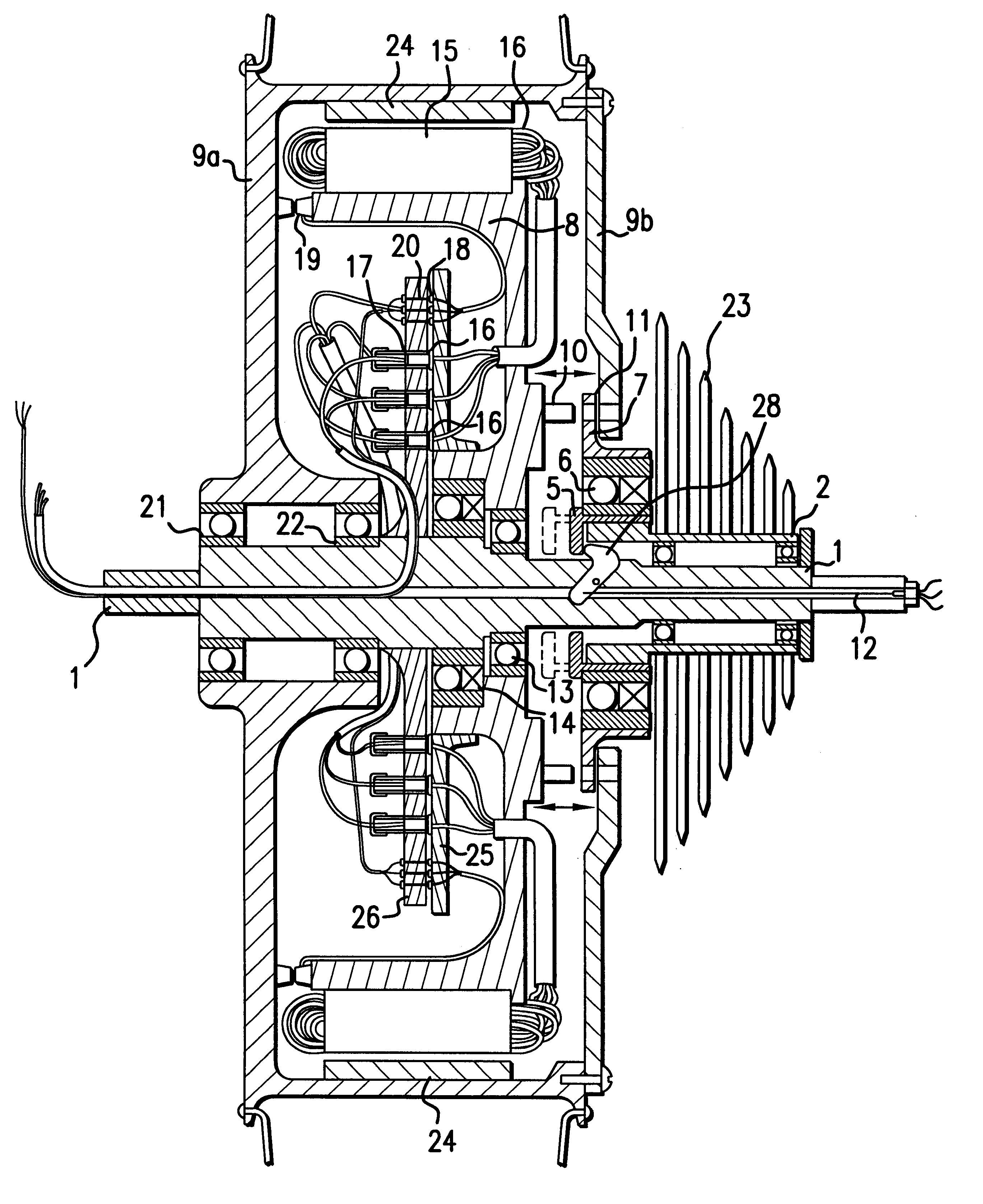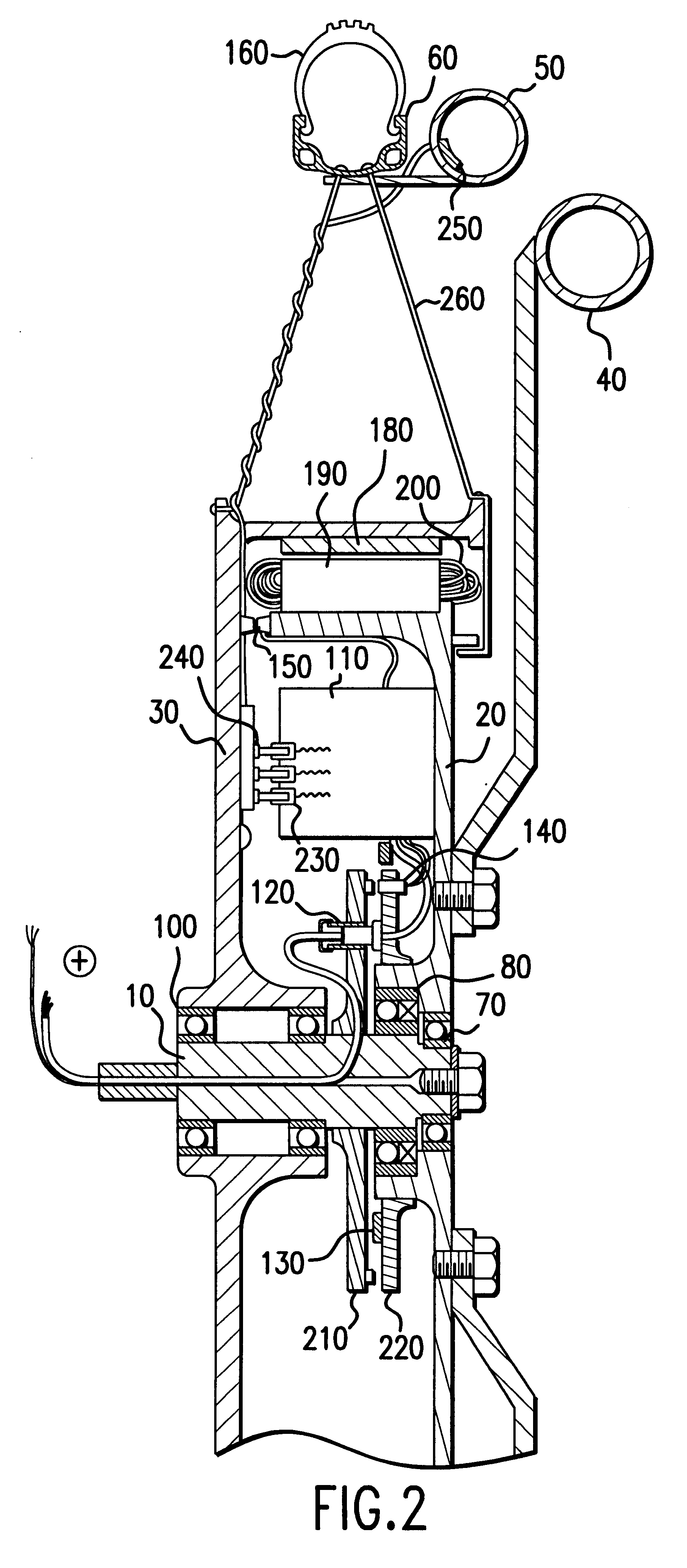Hybrid drive mechanism for a vehicle driven by muscle power, with an auxiliary electric motor
a technology of hybrid drive and muscle power, which is applied in the direction of motorcycling, cycles, transportation and packaging, etc., can solve the problems of reducing the pleasure of riding, unsatisfactory feeling, and no longer providing a propulsive output of electric motors
- Summary
- Abstract
- Description
- Claims
- Application Information
AI Technical Summary
Benefits of technology
Problems solved by technology
Method used
Image
Examples
Embodiment Construction
The exemplary embodiment shown in FIG. 1 is a possible arrangement of a propulsion system in accordance with this invention in a bicycle, using a brushless d.c. motor and a one-sided seating of a rotor designed as a wheel hub.
In the example represented, a rotor 9 of an electric motor, which is electrically driven with first rotations per minute (rpm) with respect to a stator 8, is designed as the hub of a wheel enclosing the stator. The stator 8 of the electric motor is rotatably seated and can be driven at second, arbitrary rpm by the toothed rings 23 of a pedal drive by means of the mechanism which will be subsequently described. Rpm resulting at the rotor 9, i.e. the hub of the wheel, corresponds to the sum of the first rpm and the second rpm.
A sleeve 2 is rotatably seated by means of ball bearings 3 and 4 on a central, hollow axle 1 and is frictionally connected with the toothed rings 23 of the pedal drive. A flange-like element 5 is pushed over one end of the sleeve 2 and is in...
PUM
 Login to View More
Login to View More Abstract
Description
Claims
Application Information
 Login to View More
Login to View More - R&D
- Intellectual Property
- Life Sciences
- Materials
- Tech Scout
- Unparalleled Data Quality
- Higher Quality Content
- 60% Fewer Hallucinations
Browse by: Latest US Patents, China's latest patents, Technical Efficacy Thesaurus, Application Domain, Technology Topic, Popular Technical Reports.
© 2025 PatSnap. All rights reserved.Legal|Privacy policy|Modern Slavery Act Transparency Statement|Sitemap|About US| Contact US: help@patsnap.com



